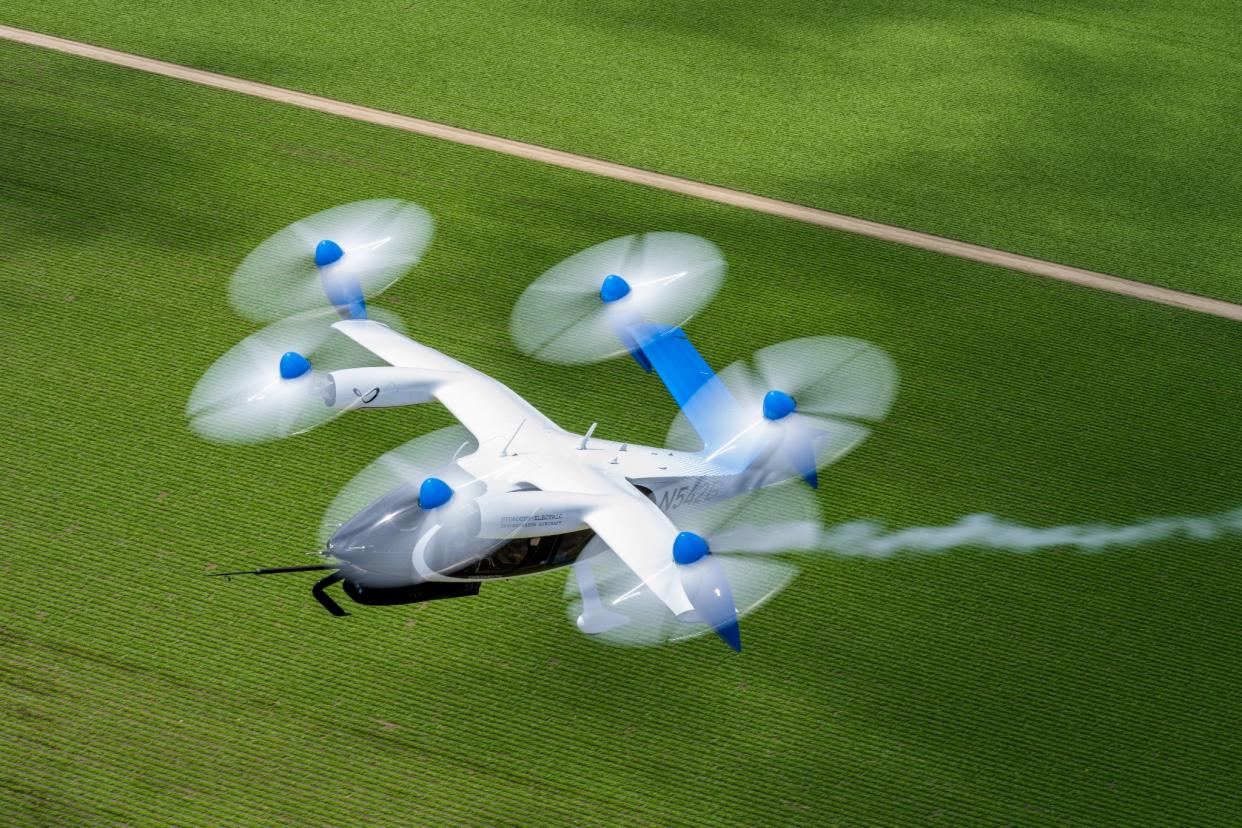Joby Aviation is betting on hydrogen-electric aircraft for regional flight

Joby Aviation is still a year away from commercially launching its electric air taxi designed for urban environments, but the startup is already looking toward its next chapter: intercity flight, powered by hydrogen.
To get the conversation started with regulators and demonstrate hydrogen’s capabilities, Joby told TechCrunch that it completed a 523-mile test flight with a hydrogen-electric prototype aircraft -- one of its eVTOLs (electric vertical takeoff and landing vehicle) that the startup fitted with a liquid hydrogen fuel cell and hydrogen-electric propulsion system.
Today, Joby Aviation's eVTOLs are being built to transport people and goods short distances within cities or from cities to airports. Powered by batteries, the aircraft have 100 miles of range. Hydrogen acts as a range-extender, opening the door to a regional use case, according to Joby.
“This is a landmark moment for aviation,” JoeBen Bevirt, CEO of Joby, told TechCrunch. “If you want to travel long distances, or you want to stay in the air for long periods of time, hydrogen-electric is a game changer.”
The use of hydrogen to power vehicles has been hotly contested for years. Hydrogen is technically a zero emissions fuel source because it only emits water when in use. But it’s expensive and energy intensive to produce, and most of today’s stock is made using fossil fuels. Green hydrogen, which is produced via renewable energy sources, has yet to scale significantly.
However, recent private and public investment into green hydrogen, including an $8 billion hydrogen hub program within Biden’s Inflation Reduction Act, is giving the sector new life. And Bevirt says “aviation has the potential to be a massive consumer of green hydrogen.”
“The amazing thing about hydrogen is it's three times lighter than jet fuel per unit of energy. It's 100 times lighter than today's batteries per unit of energy,” Bevirt said. “And with hydrogen fuel cells…we're able to convert the chemical energy in hydrogen into propulsion twice as efficiently.”
Joby has been quietly setting the stage to implement hydrogen into its eVTOLs. In 2021, Joby acquired H2Fly, a German hydrogen aviation startup. Last year, H2Fly demonstrated its own piloted flight with a liquid hydrogen-powered aircraft, and now, Joby has used that same technology to power a hydrogen version of its eVTOL. Bevirt told TechCrunch that the fuel cell system that H2Fly designed and built was able to power the six electric motors on the Joby aircraft and recharge its batteries in flight.
Joby is still very much in the demonstration phase, but when the startup is ready to start testing regional flights, it’ll be able to integrate hydrogen-powered eVTOLs into its current system with minimal financial outlay, according to Bevirt.
“We take this battery electric aircraft we’ve built, and we take 90% of the systems and components that are in it, and we augment it with a hydrogen-electric range extender,” said Bevirt. “And now, with a very small incremental investment, we can use the same vertiports, the same pilots and mechanics and the Elevate operating system, which does all the back-end logic.”
ElevateOS, which is core to Joby’s planned air taxi service, is a nod to Uber’s Elevate air taxi business, which the ride-hail giant sold to Joby in 2020. That sale included a set of software tools that enable on-demand mobility not unlike hailing an Uber ride. And in fact, Joby’s app will be integrated with Uber and Delta Airlines, the startup’s launch partner.
“So whether you pick up the Joby app or the Uber app, all of a sudden, it gives you the opportunity to not just go across town, but you can go anywhere in a region,” said Bevirt.
Some investors aren’t so convinced.
Cyrus Sigari, co-founder and managing partner of VC Up.Partners, said that while he’d love to see a hydrogen-powered eVTOL come to life, investors “would need to see a very compelling technical and business case to pursue investment in the category.”
One of the biggest challenges, he said, lies with the infrastructure.
“The industry is already scratching its head figuring out how to support battery electric aircraft with charging infrastructure at airports,” Sigari told TechCrunch. “Adding hydrogen filling stations into that equation will present even more challenges.”
He noted the recent shutdown of Universal Hydrogen, one of the more prominent players in the hydrogen space for powering traditional airlines, has brought to light just how hard all of this is.
When asked about the hydrogen filling stations, Bevirt wasn’t fazed.
“We don’t expect that to be a significant impediment to the rollout,” Bevirt told TechCrunch. “We are in conversations with lots of airports across the country and around the world that are putting in liquid hydrogen refueling infrastructure.”
And even as Universal Hydrogen had to shutter because it was unable to raise enough funds to continue, ZeroAvia signed a large deal with American Airlines, which committed to the purchase of 100 hydrogen-powered engines.
Joby didn’t provide a timeline for when it plans to launch hydrogen-powered eVTOLs, but the goal with its demonstration flight is to open the floor to discussion with green hydrogen producers and regulators.
“This is an important moment where we can begin the dialogue with regulators, both here in the U.S. and around the world, to say the technology is here, the technology is ready and it’s time to put the pieces in place to certify this,” said Bevirt.


